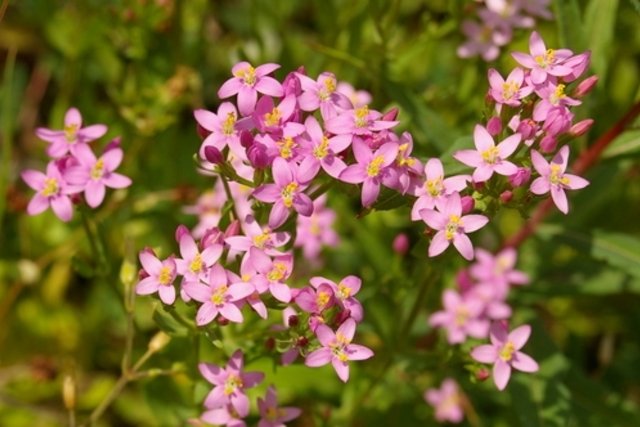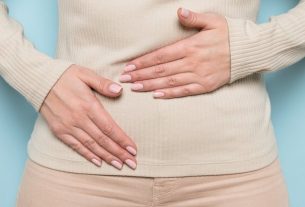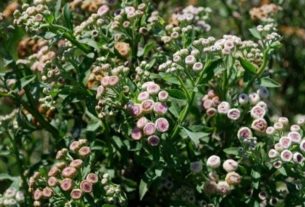Fel-da-terra is a medicinal plant, of the species Centaurium erythraeawidely used to treat poor digestion, liver disease, loss of appetite or excess gas.
The normally used parts of this medicinal plant are its aerial parts, from which substances with medicinal properties are extracted, such as phenolic compounds and flavonoids, for the preparation of tea, juices or wines, for example.
Earth gall, also known as lesser cornflower, can be found in health food stores and compounding pharmacies and should be used with medical or herbalist advice.

What is it for
Earth gall is indicated for:
- Indigestion;
- Excessive gas or constipation;
- Liver diseases, such as hepatitis and jaundice;
- Stomatitis, which are small wounds and blisters that appear in the mouth;
- Chronic laryngitis or pharyngitis;
- Kidney damage caused by diabetes;
- Urinary infections;
- Worms;
- Fever.
Furthermore, this medicinal plant can also be used to stimulate appetite, in cases of anorexia, for example, especially when combined with other medicinal plants such as gentian and mugwort.
However, although it has health benefits, more studies are still needed to prove them, as most scientific experiments have been carried out on rats. Therefore, the use of this plant should only be done with medical or herbalist advice.
Earth gall has antioxidant, anti-inflammatory, vermifuge, antidiabetic, diuretic, antispasmodic, gastric juice stimulant and antipyretic properties.
These benefits are due to the presence of xanthonoids, secoiridoids, terpenoids, phenolic compounds, flavonoids and xanthones, for example, in its composition.
Earth gall tea
Earth gall can be used to make liquor, wine and teas, which should be consumed 2 to 3 times a day before meals, for a maximum of 2 weeks.
Ingredients
- 1 tablespoon of gall leaves;
- 1 cup of water.
Preparation mode
Bring the water to a boil and when it boils, turn off the heat. Add the boiling water to the cup with the gall leaves. Let it rest until it’s warm, strain, and then drink.
Possible side effects
The most common side effects of fel-da-terra are irritation of the stomach lining, abdominal pain or discomfort, especially when used for a prolonged period of time.
In addition, more serious side effects may occur, which require immediate medical attention, such as rapid heartbeat, palpitations, shortness of breath, dizziness, mental confusion, difficulty speaking, loss of motor coordination or severe weakness.
You should also seek emergency help if symptoms such as severe headache, muscle stiffness, blurred or haloed vision appear, or a feeling of fainting.
Who shouldn’t use
Fel-da-terra should not be used by children, pregnant or breastfeeding women.
Furthermore, this plant is also contraindicated for people who have gastritis, stomach ulcers, gastroesophageal reflux, Crohn’s disease, diarrhea, acute inflammation of the gastrointestinal tract or metabolic acidosis, for example.
Bibliography
- CHDA, A.; et al. Centaurium Erythraea Extracts Exert Vascular Effects through Endothelium- and Fibroblast-dependent Pathways. Plant Med. 86. 2; 121-131, 2020
- EL MENYIY, N.; et al. Phytochemical properties, biological activities and medicinal use of Centaurium erythraea Rafn. J Ethnopharmacol. 276. 114171, 2021
- DORDEVIC, M.; et al. Centaurium erythraea extract improves survival and functionality of pancreatic beta-cells in diabetes through multiple routes of action. J Ethnopharmacol. 242. 112043, 2019
- GUEDES, L.; et al. Bioactivities of Centaurium erythraea (Gentianaceae) Decoctions: Antioxidant Activity, Enzyme Inhibition and Docking Studies. Molecules. 24. 20; 3795, 2019
- DORDEVIC, M.; et al. Centaurium erythraea methanol extract protects red blood cells from oxidative damage in streptozotocin-induced diabetic rats. J Ethnopharmacol. 202. 172-183, 2017

Sign up for our newsletter and stay up to date with exclusive news
that can transform your routine!
Warning: Undefined array key "title" in /home/storelat/public_html/wp-content/plugins/link-whisper-premium/templates/frontend/related-posts.php on line 12
Warning: Undefined array key "title_tag" in /home/storelat/public_html/wp-content/plugins/link-whisper-premium/templates/frontend/related-posts.php on line 13



